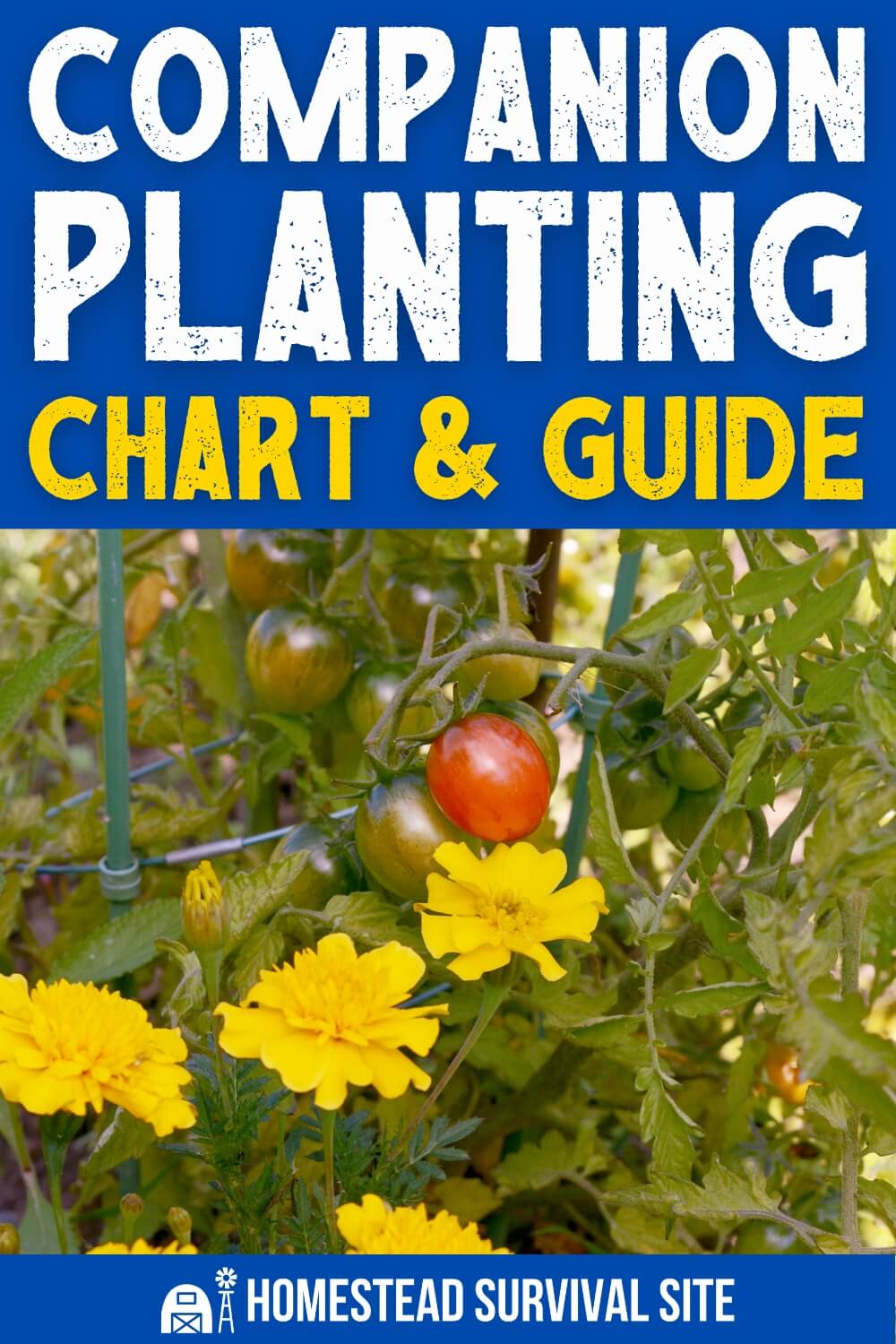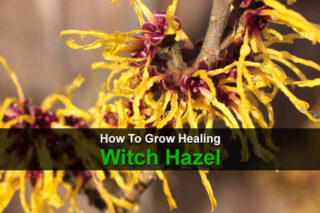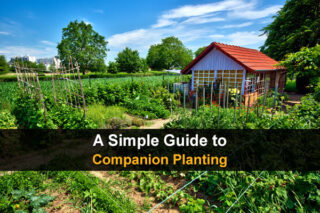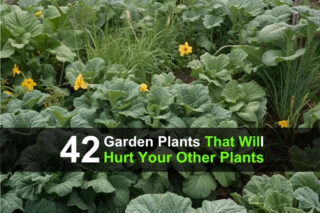Estimated reading time: 14 minutes
I'm always shocked at how many new gardeners don’t know about companion planting. It's one of the first things you learn when starting a garden.
For those who don't know, companion planting is the practice of growing certain plants together so they can help each other thrive. It's also important to keep certain plants apart so they don’t hurt each other.
If you want your plants to grow faster, stronger, and produce more, this is a game-changing strategy. And if you’ve been struggling with disappointing yields or mystery pest problems, it might be because you’ve accidentally placed bad companions side by side.
Want to save this post for later? Click Here to Pin It On Pinterest!
Why Companion Planting Works
Some plants form little garden alliances. Others? Not so much. Here's why some plants make great neighbors—and why others don't:
🌿 Plants Help Each Other By:
- Repelling pests – Some herbs and flowers naturally drive bugs away.
- Attracting beneficial insects – Like bees, ladybugs, and parasitic wasps.
- Improving soil – Nitrogen-fixers like beans enrich the soil.
- Providing shade or structure – Tall plants can protect or support others.
- Creating a healthier microclimate – Groundcovers can retain moisture and suppress weeds.
🚫 Plants Harm Each Other By:
- Attracting the same pests – Which leads to infestations.
- Spreading disease – Fungal problems and viruses can jump between bad neighbors.
- Competing for nutrients – Heavy feeders can starve the plants next to them.
- Disrupting root systems or growing conditions – Some plants just don't play nice.
The Chart: 40 Common Garden Plants
Below, we’ve listed 40 of the most common vegetables, herbs, and fruits that gardeners like to grow—along with the best and worst companions for each. We've carefully chosen only the companions that have active, proven benefits or harm, not just plants that happen to tolerate each other.
We left out the following four plants, even though they’re technically edible, because they don’t pair well with anything and will actually harm most other plants they’re grown near:
- Fennel
- Horseradish
- Jerusalem Artichoke
- Mint
These are best grown on their own, far away from everything else. We explain why in more detail at the bottom of the article.
👉 By the way, this chart has a print button in case you want a copy. There's also an option to download a PDF or a CSV file.
Companion Planting Chart
| Plant | Best Companions: | Worst Companions: |
|---|---|---|
| Asparagus | Basil, Comfrey, Marigolds, Parsley, Tomatoes | Beets, Garlic, Onions, Potatoes |
| Basil | Chives, Lettuce, Oregano, Marigolds Peppers, Tomatoes | Cucumber, Rue |
| Beets | Bush Beans, Catnip, Garlic, Lettuce, Onions | Mustard Greens, Pole Beans |
| Broccoli | Bush Beans, Carrots, Chives, Dill, Garlic, Lettuce, Nasturtium, Onion, Rosemary, Sage, Spinach, Swiss Chard, Thyme | Peppers, Pole Beans, Squash, Strawberry, Tomatoes |
| Bush Beans | Carrots, Celery, Corn, Cucumbers, Lettuce, Radishes, Savory, Swiss Chard, Strawberries | Chives, French Marigolds, Garlic, Leeks, Onions, Peppers, Sunflowers, Tomatoes |
| Cabbage | Celery, Chamomile, Dill, Garlic, Nasturtiums, Onions, Sage, Thyme | Eggplant, Grapes, Peppers, Pole Beans, Strawberries, Tomatoes |
| Carrots | Chives, Leeks, Lettuce, Onion, Parsley, Rosemary, Sage | Bush Beans, Celery, Cilantro, Dill, Parsnips, Pole Beans, Tomatoes |
| Cauliflower | Beans, Carrots, Chives, Cucumber, Dill, Garlic, Lettuce, Nasturtium, Onion, Rosemary, Sage, Spinach, Swiss Chard, Thyme | Corn, Peppers, Squash, Strawberry, Tomatoes |
| Chives | Carrots, Parsley, Tomatoes | Asparagus, Beans, Peas, Strawberries |
| Cilantro | Basil, Lettuce, Sage, Spinach, Thyme, Tomatoes | Carrots, Dill |
| Corn | Dill, Melons, Parsley, Pole Beans, Squash | Broccoli, Cauliflower, Cabbage, Celery, Eggplant, Tomatoes |
| Cucumber | Bush Beans, Corn, Dill, Lettuce, Nasturtium, Onion | Melons, Pole Beans, Potatoes, Pumpkins, Sage, Rosemary |
| Dill | Broccoli, Cabbage, Cauliflower, Corn, Cucumber, Lettuce, Onion | Carrots, Cilantro, Peppers, Tomatoes |
| French Marigolds | Carrots, Melons, Peppers, Tomatoes | Bush Beans, Peas, Pole Beans |
| Garlic | Broccoli, Cauliflower, Lettuce, Strawberry, Tomatoes | Asparagus, Bush Beans, Peas, Pole Beans |
| Green Beans (Bush) | Beets, Carrots, Corn, Swiss Chard, Radishes | Chives, French Marigolds, Garlic, Leeks, Onions, Peppers, Tomatoes |
| Green Beans (Pole) | Celery, Corn, Lettuce, Radishes, Savory, Squash | Broccoli, Cabbage, Cauliflower, Chives, Garlic, Leeks, Marigolds, Peppers, Sunflowers, Tomatoes |
| Leeks | Beets, Carrots, Celery, Onion, Spinach | Bush Beans, Peas, Pole Beans, Turnips |
| Lettuce | Carrots, Cucumber, Dill, Garlic, Onion, Spinach, Strawberry, Tomatoes | Parsley |
| Marigold (Not French) | Broccoli, Cabbage, Carrots, Cauliflower, Melons, Peppers, Tomatoes | – |
| Melons | Corn, Marigold, Nasturtium | Cabbage, Cucumbers, Kale, Potatoes, Squash |
| Nasturtium | Broccoli, Cauliflower, Cucumber, Melons, Tomatoes | – |
| Onions | Carrots, Lettuce, Radishes, Swiss Chard, Tomatoes | Asparagus, Beans |
| Oregano | Basil, Marjoram, Peppers | – |
| Parsley | Asparagus, Carrots, Chives, Onion, Tomatoes | Lettuce |
| Peas | Carrots, Corn, Cucumber, Radishes, Spinach | Chives, Garlic, Leeks, Onion, Pole Beans |
| Peppers | Basil, Carrots, Oregano, Rosemary, Swiss Chard | Beans, Broccoli, Cauliflower, Kale |
| Pole Beans | Corn, Marjoram, Radishes, Squash | Broccoli, Cauliflower, Chives, French Marigolds, Garlic, Kale, Leeks, Onions, Peppers, Sunflowers, Tomatoes |
| Potatoes | Bush Beans, Catnip, Cilantro, Horseradish, Marigolds, Nasturtiums | Asparagus, Carrots, Cucumbers, Eggplant, Peppers, Pumpkins, Squash, Sunflowers, Tomatoes |
| Rosemary | Broccoli, Carrots, Cauliflower | Basil, Cilantro, Parsley |
| Sage | Broccoli, Cabbage, Carrots, Cauliflower, Kale | Basil, Cilantro, Cucumber, Rue |
| Spinach | Broccoli, Cauliflower, Leeks, Lettuce, Peas, Radishes, Strawberries | Cilantro, Corn, Melons, Potatoes, Sunflowers |
| Strawberry | Bush Beans, Garlic, Lettuce, Onion, Spinach, Thyme | Broccoli, Cabbage, Cauliflower, Peppers, Pole Beans, Tomatoes |
| Summer Squash (+ Zucchini) | Borage, Bush Beans, Corn, Dill, Marigolds, Nasturtiums, Radishes, Yarrow | Cucumbers, Potatoes, Pumpkins, Sunflowers, Tomatoes |
| Sunflower | – | Beans, Cabbage, Kale, Peas, Potatoes |
| Sweet Potatoes | Bush Beans, Dill, Marigolds, Nasturtiums, Thyme, Yarrow | Corn, Potatoes, Pumpkins, Squash, Sunflowers, Tomatoes |
| Swiss Chard | Beans, Onion, Peppers | Corn, Potatoes, Spinach |
| Thyme | Broccoli, Cabbage, Cauliflower, Eggplant, Strawberries | Basil, Celery, Cilantro, Cucumbers, Parsley |
| Tomatoes | Basil, Chives, Garlic, Lettuce, Marigold, Nasturtium, Onion, Parsley, Peppers | Beans, Broccoli, Cauliflower, Corn, Dill |
| Winter Squash (+ Pumpkin) | Borage, Corn, Dill, Marigolds, Nasturtiums, Pole Beans, Radishes, Yarrow | Cucumbers, Melons, Potatoes, Sunflowers, Tomatoes |
Companion Planting Guide
Let’s break down the good and bad companions for each plant and explain why they work—or clash.
Asparagus
Good companions: Asparagus thrives with fragrant herbs like basil and parsley, which help repel pests such as asparagus beetles. Marigolds also provide pest control, while tomatoes and comfrey enhance the overall ecosystem by improving soil health and offering natural insect deterrents.
Bad companions: Avoid planting asparagus near beets, garlic, onions, or potatoes. These plants compete for underground space and nutrients, which can stress asparagus roots and reduce vigor over time.
Basil
Good companions: Basil is famous for improving the flavor and growth of tomatoes and peppers. It also works well with oregano, chives, and marigolds, all of which help deter pests like aphids and whiteflies. Lettuce also enjoys the partial shade basil provides in hot weather.
Bad companions: Keep basil away from cucumbers and rue. Cucumbers can compete for water and grow too aggressively, while rue can chemically inhibit basil’s development.
Beets
Good companions: Beets pair well with bush beans, which add nitrogen to the soil. Garlic and onions repel beet pests, while catnip helps deter flea beetles. Lettuce makes a great low-growing companion that doesn’t compete for root space.
Bad companions: Avoid planting beets near mustard greens and pole beans. Mustard can suppress beet germination, and pole beans may chemically inhibit beet development.
Broccoli
Good companions: Broccoli benefits from pest-repelling herbs like dill, rosemary, and thyme, which keep cabbage moths and aphids at bay. Leafy greens like lettuce, spinach, and Swiss chard make good neighbors, and bush beans help enrich the soil.
Bad companions: Steer clear of planting broccoli near tomatoes, peppers, squash, strawberries, or pole beans. These plants either attract similar pests or compete for nutrients, making broccoli more vulnerable.
Bush Beans
Good companions: Bush beans thrive alongside carrots, corn, cucumbers, radishes, and Swiss chard. These plants don’t compete for space and benefit from the nitrogen beans add to the soil. Savory is also a great herb to repel bean beetles.
Bad companions: Avoid planting bush beans near alliums like garlic, onions, leeks, and chives, which can inhibit nitrogen fixation. They also don’t get along with French marigolds, peppers, sunflowers, or tomatoes due to competition and pest overlap.
Cabbage
Good companions: Cabbage thrives when planted with aromatic herbs like dill, thyme, sage, and chamomile, which repel cabbage moths and aphids. It also benefits from celery, onions, garlic, and nasturtiums, which help deter pests and improve the microclimate around the cabbage.
Bad companions: Avoid growing cabbage near eggplant, grapes, peppers, pole beans, strawberries, or tomatoes. These plants either attract pests that plague cabbage or compete heavily for nutrients and water.
Carrots
Good companions: Carrots grow well with alliums like chives, onions, and leeks, which help repel the dreaded carrot fly. Parsley, rosemary, and sage are also helpful for masking the scent of carrots, making them less attractive to pests. Lettuce is a low-growing, non-competitive neighbor.
Bad companions: Keep carrots away from bush and pole beans, which can inhibit their development. Also avoid celery, dill, cilantro, parsnips, and tomatoes, which either attract shared pests or compete in the same root zone.
Cauliflower
Good companions: Cauliflower loves the company of pest-repelling herbs like dill, chives, rosemary, sage, and thyme. Leafy greens like spinach and Swiss chard, along with carrots and lettuce, make great underplantings that won’t compete for space. Beans help boost soil fertility.
Bad companions: Avoid corn, peppers, squash, strawberries, and tomatoes near cauliflower, as they compete for nutrients or attract harmful pests like aphids and beetles.
Chives
Good companions: Chives are excellent at repelling aphids and other pests, making them ideal companions for carrots, parsley, and tomatoes. They also help improve flavor and deter fungal issues in the garden.
Bad companions: Don’t plant chives near asparagus, beans, peas, or strawberries. They can disrupt beneficial soil bacteria (especially in legumes) and may stunt growth if overcrowded.
Cilantro
Good companions: Cilantro grows well with lettuce, spinach, thyme, basil, sage, and tomatoes. These herbs and greens enjoy similar conditions and benefit from cilantro’s ability to attract beneficial insects like hoverflies.
Bad companions: Avoid planting cilantro near carrots and dill. These relatives compete for similar space, attract the same pests, and risk cross-pollination or bolting issues.
Corn
Good companions: Corn shines in traditional “Three Sisters” planting with pole beans and squash. It also pairs well with dill, parsley, and melons, which benefit from its shade and structural support. These companions help attract beneficial insects and improve overall resilience.
Bad companions: Avoid brassicas like broccoli, cauliflower, cabbage, and also celery, eggplant, and tomatoes. These plants compete with corn for nutrients and may share pests like corn earworms or aphids.
Cucumber
Good companions: Cucumbers benefit from nitrogen-fixing bush beans, and pest-repelling herbs like dill and onion. Lettuce and nasturtiums grow well nearby without competing, and corn can offer helpful partial shade if managed properly.
Bad companions: Steer clear of melons, pole beans, potatoes, pumpkins, rosemary, and sage. These plants either share diseases and pests or have different moisture and space needs that clash with cucumbers.
Dill
Good companions: Dill is a magnet for beneficial insects, making it an excellent partner for brassicas like broccoli, cabbage, and cauliflower. It also grows well near corn, cucumbers, lettuce, and onions, helping control pests and attract pollinators.
Bad companions: Dill should not be planted near carrots or cilantro due to shared pests and cross-pollination risks. It also negatively affects peppers and tomatoes, especially when allowed to flower and mature.
French Marigolds
Good companions: French marigolds are fantastic at repelling nematodes, aphids, and beetles, making them great companions for carrots, melons, peppers, and tomatoes. Their strong scent masks nearby plants from insect detection.
Bad companions: Avoid planting French marigolds near bush or pole beans and peas. Certain varieties release chemicals that can inhibit the growth of legumes, especially in close quarters.
Garlic
Good companions: Garlic is a powerful pest deterrent, making it an excellent companion for tomatoes, lettuce, broccoli, cauliflower, and strawberries. It helps repel aphids, spider mites, and fungal diseases while thriving in similar growing conditions.
Bad companions: Avoid planting garlic near asparagus, bush beans, peas, and pole beans. Garlic can inhibit nitrogen-fixing bacteria in legumes and compete heavily for root space with asparagus.
Green Beans (Bush)
Good companions: Bush beans grow well with root crops like beets, carrots, radishes, and shallow leafy greens like Swiss chard. These plants don’t compete and benefit from the nitrogen beans add to the soil.
Bad companions: Keep bush beans away from alliums such as garlic, onions, leeks, and chives, which can hinder nitrogen fixation. Also avoid French marigolds, peppers, and tomatoes due to competition and pest issues.
Green Beans (Pole)
Good companions: Pole beans pair perfectly with corn and squash in the classic Three Sisters planting. They also benefit from radishes and savory, which help deter pests and enhance growth.
Bad companions: Avoid planting pole beans near brassicas like broccoli, cauliflower, cabbage, kale, and alliums like onions, garlic, and leeks. Also keep them away from marigolds, peppers, sunflowers, and tomatoes, which either compete or disrupt beneficial soil microbes.
Leeks
Good companions: Leeks thrive with carrots, beets, celery, onion, and spinach. These companions don’t interfere with each other’s roots and benefit from leek’s pest-repelling abilities.
Bad companions: Don’t plant leeks near beans or peas (bush or pole), which conflict with leeks’ sulfuric compounds, or turnips, which compete heavily for space and resources.
Lettuce
Good companions: Lettuce pairs beautifully with carrots, onions, garlic, spinach, tomatoes, and strawberries. These companions help deter pests and create a cool, moist microclimate perfect for lettuce.
Bad companions: Avoid parsley, which can grow aggressively, bolt early, and attract hoverflies that may shift to attacking nearby lettuce.
Marigolds (Not French)
Good companions: Standard marigolds are excellent companions for broccoli, cabbage, carrots, cauliflower, melons, peppers, and tomatoes. They repel many pests and improve garden biodiversity.
Bad companions: None—regular marigolds are safe to plant widely and don’t exhibit the growth-inhibiting effects of some French marigolds.
Melons
Good companions: Melons love being near corn, marigolds, and nasturtiums, which help attract pollinators and repel beetles and aphids. These companions also help manage the large, sprawling space melons require.
Bad companions: Avoid planting melons near cabbage, kale, potatoes, squash, or cucumbers. These either compete for space and nutrients or share pests and diseases that can spread quickly.
Nasturtium
Good companions: Nasturtiums are fantastic trap crops that lure aphids and beetles away from broccoli, cauliflower, cucumbers, melons, and tomatoes. They also attract pollinators and thrive in tough conditions.
Bad companions: None—nasturtiums are non-invasive and beneficial to most plants, making them an all-around good neighbor in the garden.
Onions
Good companions: Onions do well with carrots, lettuce, radishes, Swiss chard, and tomatoes. Their strong smell deters pests like aphids and carrot flies, making them excellent border plants.
Bad companions: Avoid asparagus and all types of beans and peas, as onions interfere with their nitrogen-fixing ability and stunt their growth.
Oregano
Good companions: Oregano is a low-maintenance herb that helps protect peppers, basil, and marjoram by repelling pests and improving overall garden resilience.
Bad companions: None—oregano is well-behaved in the garden and plays nicely with most herbs and vegetables.
Parsley
Good companions: Parsley makes a great companion for asparagus, carrots, chives, onions, and tomatoes. It helps attract beneficial insects like hoverflies and parasitic wasps, which prey on aphids and other soft-bodied pests.
Bad companions: Avoid planting parsley near lettuce. It can bolt early, grow aggressively, and crowd out tender lettuce plants, especially in small spaces.
Peas
Good companions: Peas thrive with carrots, corn, cucumbers, radishes, and spinach. These companions don’t compete for nutrients and benefit from the nitrogen peas add to the soil.
Bad companions: Avoid alliums like chives, garlic, leeks, and onions, which inhibit nitrogen-fixing bacteria. Pole beans are also a poor choice, as they compete for trellis space and light.
Peppers
Good companions: Peppers benefit from being planted with basil, oregano, carrots, rosemary, and Swiss chard. These companions help repel pests, improve flavor, and share similar growing conditions.
Bad companions: Keep peppers away from beans, broccoli, cauliflower, and kale. These plants compete for nutrients or attract overlapping pests that can stress out your pepper plants.
Pole Beans
Good companions: Pole beans do great with corn, squash, radishes, and marjoram. These companions help complete the Three Sisters trio and create a well-balanced growing environment.
Bad companions: Avoid brassicas like broccoli, cauliflower, cabbage, and kale, as well as alliums and peppers. Also skip French marigolds, sunflowers, and tomatoes—these interfere with growth or compete heavily.
Potatoes
Good companions: Potatoes grow well with bush beans, catnip, cilantro, marigolds, horseradish, and nasturtiums. These companions help repel beetles and other pests while improving soil and pollinator activity.
Bad companions: Keep potatoes away from carrots, cucumbers, eggplant, peppers, pumpkins, squash, sunflowers, and tomatoes. These plants compete for nutrients, share pests, or increase the risk of disease.
Rosemary
Good companions: Rosemary is a great pest deterrent for carrots, broccoli, and cauliflower. It thrives in dry soil and repels a variety of insects with its strong scent.
Bad companions: Avoid pairing rosemary with basil, cilantro, or parsley. These herbs prefer more moisture and richer soil, which clashes with rosemary’s dry, Mediterranean vibe.
Sage
Good companions: Sage thrives when planted near broccoli, cabbage, cauliflower, carrots, and kale. It helps deter cabbage moths and flea beetles with its aromatic oils.
Bad companions: Avoid planting sage near basil, cilantro, cucumber, or rue. These herbs either compete for different growing conditions or inhibit each other chemically.
Spinach
Good companions: Spinach grows well with broccoli, cauliflower, leeks, lettuce, peas, radishes, and strawberries. These companions help manage pests and don’t crowd spinach’s shallow roots.
Bad companions: Avoid cilantro, corn, melons, potatoes, and sunflowers. These plants either create too much shade, compete for nutrients, or increase pest pressure.
Strawberries
Good companions: Strawberries thrive with bush beans, garlic, lettuce, onions, spinach, and thyme. These companions help deter pests and improve soil structure while staying low to the ground.
Bad companions: Keep strawberries away from broccoli, cabbage, cauliflower, peppers, pole beans, and tomatoes. These compete heavily for nutrients or bring diseases strawberries are susceptible to.
Summer Squash (including Zucchini)
Good companions: Summer squash grows well with borage, bush beans, corn, dill, marigolds, nasturtiums, radishes, and yarrow. These companions attract pollinators, deter pests, and enrich the soil.
Bad companions: Avoid planting squash near cucumbers, potatoes, pumpkins, sunflowers, or tomatoes. They compete for space and attract many of the same pests and diseases.
Sunflower
Good companions: Sunflowers don’t have many true companions, but they can attract pollinators to the general area, which may benefit nearby flowering crops if spaced properly.
Bad companions: Avoid planting sunflowers near beans, cabbage, kale, peas, or potatoes. They are mildly allelopathic and compete for light, space, and nutrients, which can stunt the growth of nearby plants.
Sweet Potatoes
Good companions: Sweet potatoes thrive alongside bush beans, dill, marigolds, nasturtiums, thyme, and yarrow. These companions help deter pests like nematodes and beetles, attract pollinators, and create a healthy, pest-resistant environment.
Bad companions: Avoid planting sweet potatoes near corn, potatoes, pumpkins, squash, sunflowers, or tomatoes. These plants either sprawl into the same space, attract the same pests, or compete for key nutrients.
Swiss Chard
Good companions: Swiss chard grows well with beans, onions, and peppers. These plants don’t compete for root space and help keep pests away, especially when interplanted.
Bad companions: Keep Swiss chard away from corn, potatoes, and spinach. These can overshadow, compete for nutrients, or overcrowd its growing space.
Thyme
Good companions: Thyme is an excellent pest-repelling herb for broccoli, cabbage, cauliflower, eggplant, and strawberries. It helps deter worms, moths, and beetles with its strong scent.
Bad companions: Avoid planting thyme near basil, cilantro, parsley, celery, or cucumbers. These prefer wetter soil and more shade, which doesn’t mesh with thyme’s dry, sunny habitat.
Tomatoes
Good companions: Tomatoes grow best with basil, chives, garlic, lettuce, marigolds, nasturtiums, onions, parsley, and peppers. These companions deter pests, improve growth, and help manage fungal diseases.
Bad companions: Keep tomatoes away from beans, broccoli, cauliflower, corn, and dill. These plants either compete heavily, share pests, or disrupt tomato growth chemically.
Winter Squash (including Pumpkin)
Good companions: Winter squash pairs beautifully with borage, corn, dill, marigolds, nasturtiums, pole beans, radishes, and yarrow. These plants support pollination, deter harmful insects, and balance out the squash’s nutrient needs.
Bad companions: Avoid planting winter squash near cucumbers, melons, potatoes, sunflowers, or tomatoes. They attract similar pests, compete for sprawling space, or create too much shade.
Conclusion
Now you know just how powerful companion planting can be. It's not just garden folklore—it's backed by biology, chemistry, and centuries of observation. With this chart in hand, you can plan a thriving garden full of healthy herbs, bountiful veggies, and sweet fruits—all working together.
Print it. Bookmark it. Share it with your gardening friends. And most importantly: Use it. Happy growing!
Like this post? Don't Forget to Pin It On Pinterest!
You May Also Like:












